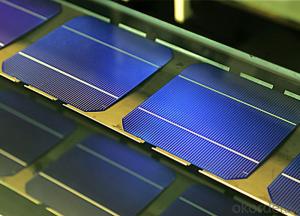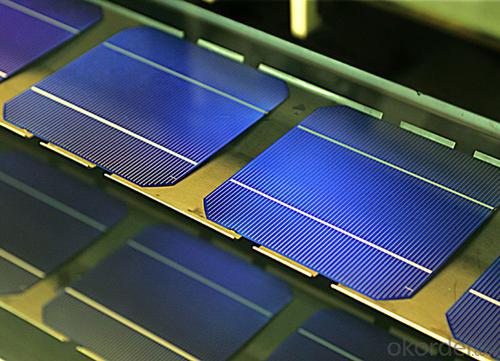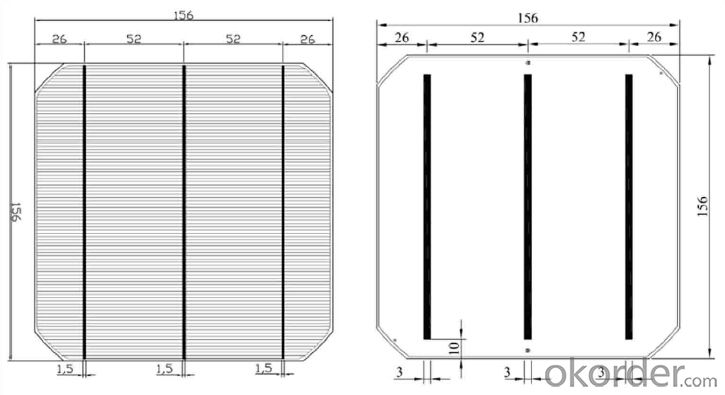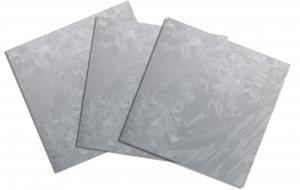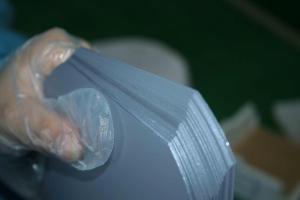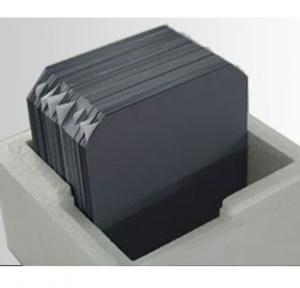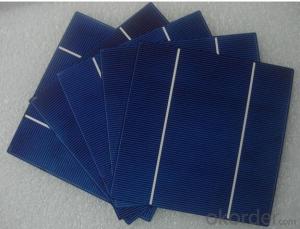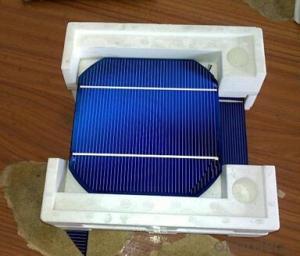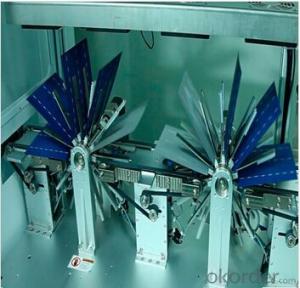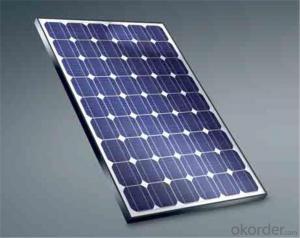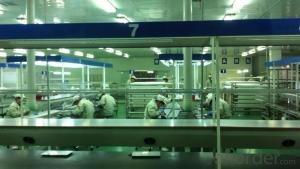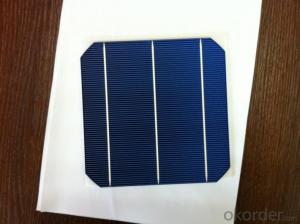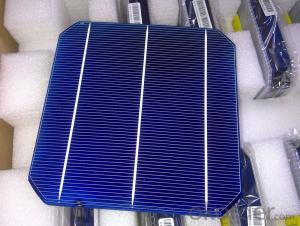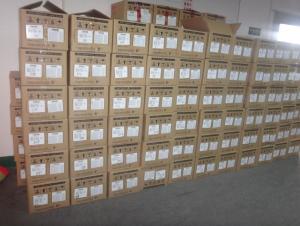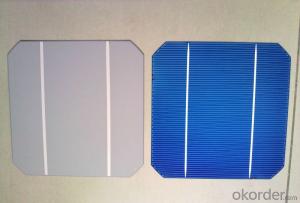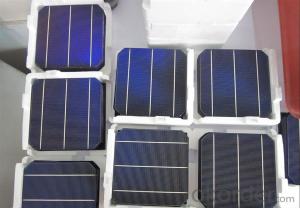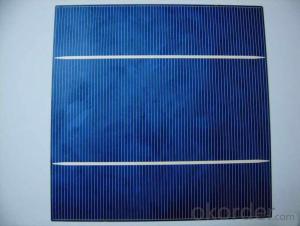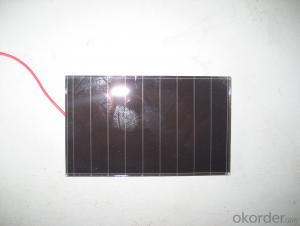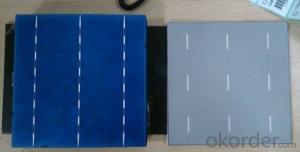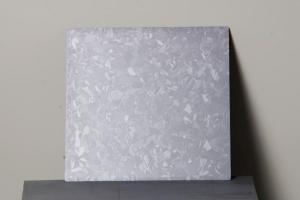Solar Mono Silicon Wafer - Mono Solar Cells 156mm*156mm in Bulk Quantity Low Price Stock 19.2
- Loading Port:
- Shanghai
- Payment Terms:
- TT OR LC
- Min Order Qty:
- 1000 pc
- Supply Capability:
- 100000 pc/month
OKorder Service Pledge
OKorder Financial Service
You Might Also Like
Brief Introduction
- Up to 20.0% efficiency, one of the highest performing mono crystalline cells on the market
- Three bus bars boosts current collection over the entire cell area, leading to higher fill factors
- Blue anti-reflecting coating allows more sunlight be captured and converted to electricity
- Finer, closer fingers improves charge collections for improved energy yield
- Lower light-induced degradation leads to greater power output over the entire module lifetime
- All solar cells are tightly classified to optimize output of module
- Maximum yield and longevity due to hotspot prevention
- Premium appearance results in a highly uniform and aesthetically appealing module
Specification
- Product Mono-crystalline silicon solar cell
- Dimension 156 mm x 156 mm ± 0.5 mm
- Thickness 200 μm ± 30 μm
- Front 1.5 ± 0.1 mm busbar (silver)
- Silicon nitride antireflection coating
- Back 3.0 mm continuous soldering pads (silver)
- Back surface field (aluminum)
Electric performance parameters

- Testing conditions: 1000 W/m2, AM 1.5, 25 °C, Tolerance: Efficiency ± 0.2% abs., Pmpp ±1.5% rel.
- Imin : at 0.5 V
Light Intensity Dependence
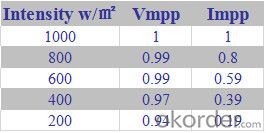
Soldering Ability
- Peel Strength: > 1.0 N/mm (Pull soldered ribbon from busbar in 5 mm/s of 180°)
Dimension Figure
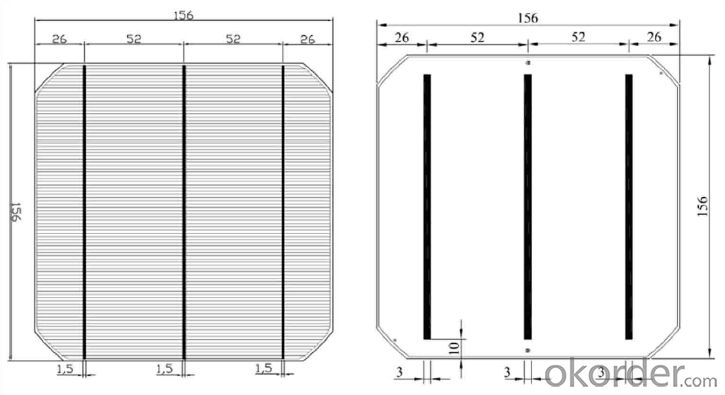
Quick Response
- Any time and anywhere, reply clients' email and solve all problems happen in the work at the first time.
- Remove clients doubts and offer the best solution at the first time.
- Give our clients the lastest news of the photovoltaic, update the newest stock informtion.
Production and Quality Control
- Precision cell efficiency sorting procedures
- Stringent criteria for color uniformity and appearance
- Reverse current and shunt resistance screening
- ISO9001,ISO14001 and OHSAS 18001,TUV Certificated
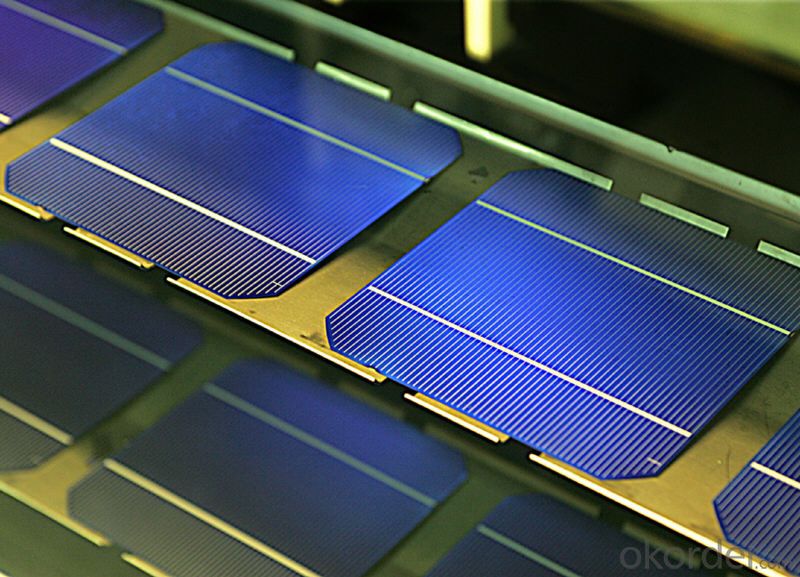
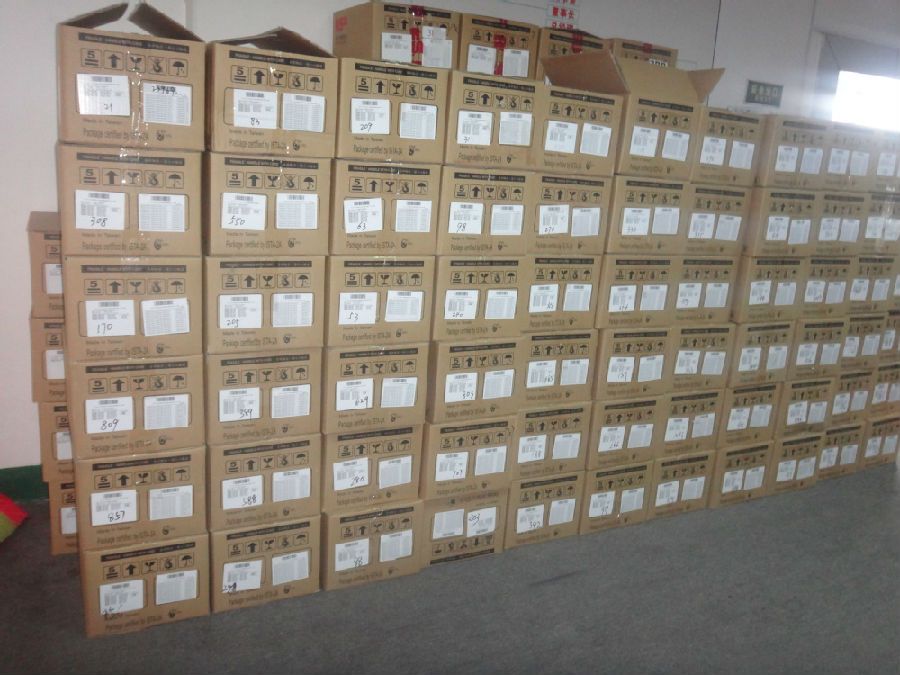
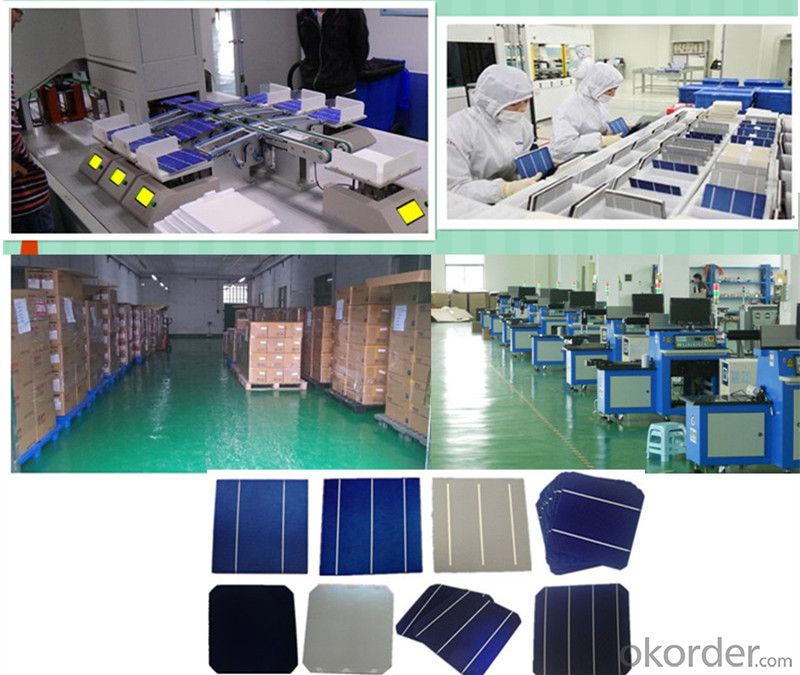
FAQ:
1. Q: Do you have your own factory?
A: Yes, we have. Our factory located in Jiangsu
2. Q: How can I visit your factory?
A: Before you visit,please contact us.We will show you the route or arrange a car to pick you up.
3. Q: Do you provide free sample?
A: Commenly we provide paid sample.
4. Q: Could you print our company LOGO on the nameplate and package?
A: Yes, we accept it.And need an Authorization Letter from you.
5. Q: Do you accept custom design on size?
A: Yes, if the size is reasonable.
6. Q: How can I be your agent in my country?
A: Please leave feedback. It's better for us to talk about details by email.
7. Q: Do you have solar project engineer who can guide me to install system?
A: Yes, we have a professional engineer team. They can teach you how to install a solar system.
- Q: What is the role of a junction box connector in a solar silicon wafer?
- A junction box connector in a solar silicon wafer serves the important role of providing a connection point for the electrical wires that transmit the generated solar energy. It ensures a secure and reliable electrical connection between the solar cells and the external electrical system, such as inverters or batteries. Additionally, the junction box connector may incorporate diodes or other protective devices to prevent reverse current flow and protect the solar panel from potential damage.
- Q: What is the purpose of a power output in a solar silicon wafer?
- The purpose of a power output in a solar silicon wafer is to convert sunlight into usable electrical energy. The power output is the measure of how much electricity the solar cell can produce, which determines its efficiency and usefulness in various applications, such as powering homes, businesses, or even charging electronic devices.
- Q: What is the meaning of the wafer (100), the crystal orientation index or the crystal plane index?Also (1100 and (111) which direction and angle should be cut?
- Said the origin and the point of x = 1, y = 1, the linear Z on the =1 atoms, if the crystal is body centered cubic lattice, the crystal orientation through the cube on the diagonal of the atom.
- Q: How do solar silicon wafers perform in coastal areas?
- Solar silicon wafers perform well in coastal areas, as long as they are properly designed and installed to withstand the harsh coastal environment. The wafers are typically made of durable materials that can resist corrosion from saltwater and the high humidity levels. However, regular maintenance and cleaning may be required to remove any salt deposits that could potentially reduce their efficiency.
- Q: What is the typical lifetime of a solar silicon wafer?
- The typical lifetime of a solar silicon wafer can vary, but it is generally expected to be around 25 to 30 years.
- Q: How does the size of a solar silicon wafer affect the efficiency of a solar panel?
- The size of a solar silicon wafer can affect the efficiency of a solar panel in a few ways. Firstly, a larger wafer allows for more solar cells to be placed on the panel, which increases the overall power output. Secondly, a larger wafer provides a larger surface area for sunlight absorption, allowing for more photons to be converted into electricity. However, a larger wafer also increases the chances of defects occurring during the manufacturing process, which can reduce the efficiency of the solar panel. Therefore, while a larger wafer can potentially increase efficiency, it must be balanced with the manufacturing challenges and costs associated with larger sizes.
- Q: The relationship between the weight and the power of solar wafers!Often see solar wafers, some reports how many watts (power), but some also reported how many tons, I do not know the relationship between the two and how to convert
- 156*156,8 inch polysilicon chip Accounting: efficiency of 16%, the thickness of the silicon chip is 180, corresponding to the amount of polysilicon per watt on the map is 7G.
- Q: How much does a solar silicon wafer weigh?
- A typical solar silicon wafer weighs around 4 to 6 grams.
- Q: What factors contribute to the degradation of a solar silicon wafer?
- Several factors contribute to the degradation of a solar silicon wafer. Firstly, exposure to harsh environmental conditions like extreme temperatures, humidity, and UV radiation can cause the wafer's surface to deteriorate over time. Secondly, impurities present in the silicon material or introduced during the manufacturing process can lead to the formation of defects, reducing the efficiency of the solar cell. Thirdly, mechanical stress, such as thermal expansion or contraction, can cause cracking or warping in the wafer, affecting its performance. Finally, improper handling, installation, or maintenance practices can also contribute to the degradation of a solar silicon wafer.
- Q: Are solar silicon wafers flexible or rigid?
- Solar silicon wafers are rigid.
Send your message to us
Solar Mono Silicon Wafer - Mono Solar Cells 156mm*156mm in Bulk Quantity Low Price Stock 19.2
- Loading Port:
- Shanghai
- Payment Terms:
- TT OR LC
- Min Order Qty:
- 1000 pc
- Supply Capability:
- 100000 pc/month
OKorder Service Pledge
OKorder Financial Service
Similar products
Hot products
Hot Searches
Related keywords
